🥣 Chicken Soup for Inflammation: A Comforting Remedy for Every Season
There’s something incredibly healing about a bowl of chicken soup — a kind of kitchen magic passed down through generations. My grandmother used to say, “If you want to heal the body and the soul, start with soup.” Inspired by her wisdom, this chicken soup for inflammation blends traditional comfort with scientifically backed anti-inflammatory ingredients.
This isn’t just your average chicken soup. Designed with healing in mind, it’s infused with vibrant vegetables, warming spices like turmeric and ginger, and enriched with collagen from slow-simmered chicken. Whether you’re battling cold weather, recovering from an illness, or simply looking to support your health, this bowl of goodness is a must-have in your recipe repertoire.
🧄 Why This Chicken Soup Fights Inflammation
Inflammation is the body’s natural defense mechanism, but chronic inflammation is tied to various health concerns like arthritis, heart disease, and digestive issues. This soup includes:
- Turmeric – contains curcumin, a powerful anti-inflammatory compound.
- Ginger – supports digestion and reduces muscle pain.
- Garlic & Onions – rich in sulfur compounds and antioxidants.
- Leafy greens & cruciferous veggies – packed with fiber, vitamins, and inflammation-fighting phytochemicals.
- Bone-in chicken – provides natural collagen and amino acids that support gut health.
🍲 Ingredients for 6 Servings
Protein
- 1.5 lbs (700g) bone-in skinless chicken thighs (or breast if preferred)
Vegetables
- 1 large onion, diced
- 3 garlic cloves, minced
- 2 celery stalks, chopped
- 2 carrots, sliced
- 1 cup chopped kale or spinach
- 1 zucchini, diced
- 1 cup chopped cauliflower florets
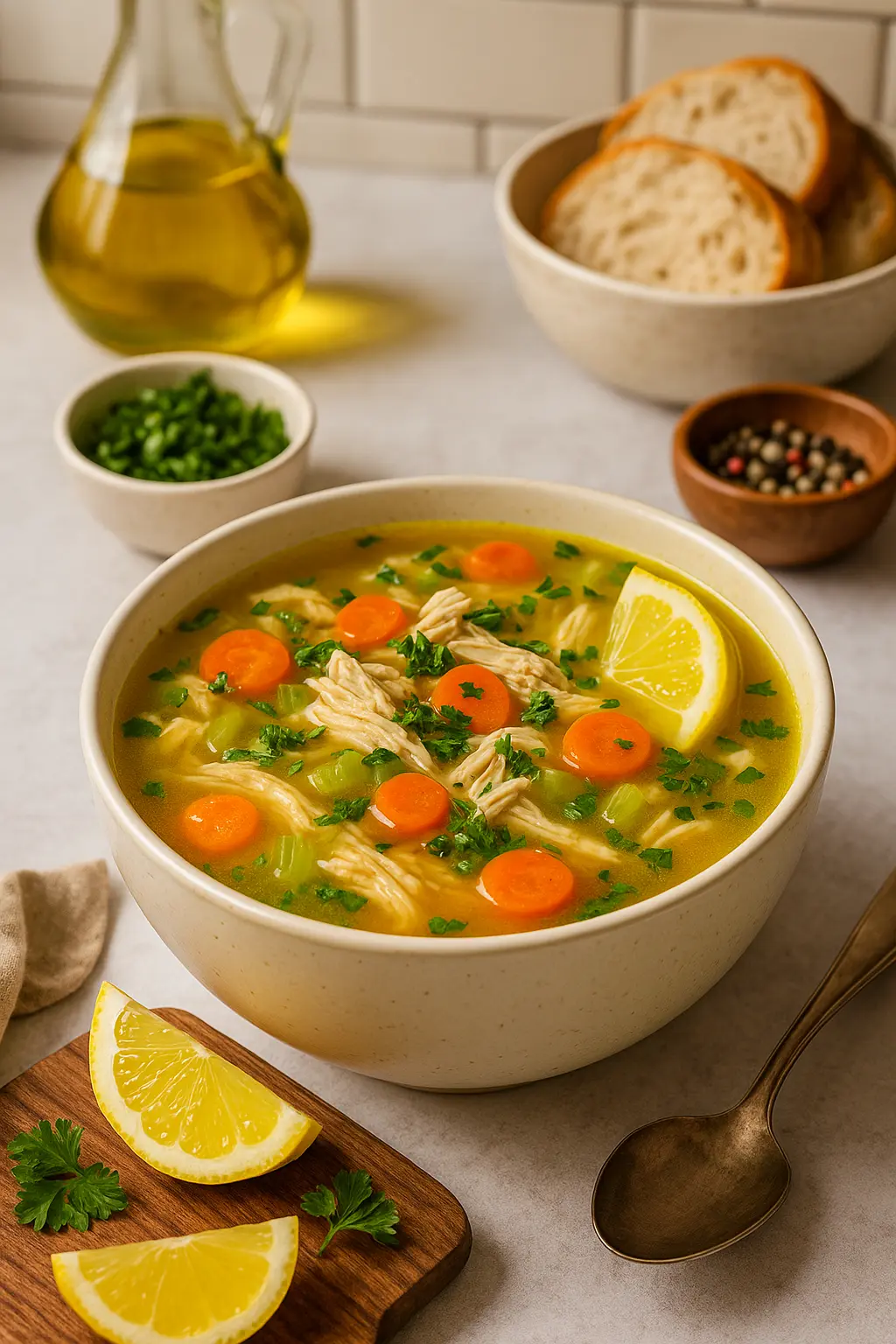
Healing Herbs & Spices
- 1 tbsp fresh ginger, grated
- 1 tsp turmeric powder (or 1-inch fresh turmeric, grated)
- 1 tsp ground black pepper
- 1 tsp dried thyme
- 1 tsp dried oregano
- 1 bay leaf
Liquids
- 8 cups low-sodium chicken bone broth (or homemade stock)
- Juice of 1 lemon (optional, for freshness)
Optional Add-ins
- 1 cup cooked quinoa or brown rice (for a heartier soup)
- Fresh parsley or cilantro for garnish
👩🍳 Instructions
Step 1: Sauté Aromatics
In a large soup pot, heat a drizzle of olive oil over medium heat. Add the onion, garlic, celery, and carrots. Sauté for 5–6 minutes until soft and fragrant.
Step 2: Add Spices
Stir in ginger, turmeric, black pepper, thyme, oregano, and the bay leaf. Cook for 1–2 minutes to release their oils and deepen the flavor.
Step 3: Add Chicken & Broth
Place chicken pieces into the pot. Pour in the bone broth, ensuring the chicken is fully covered. Bring to a gentle boil.
Step 4: Simmer
Reduce the heat and simmer for 30–40 minutes, or until the chicken is cooked through and tender.
Step 5: Shred Chicken
Remove the chicken and shred it using two forks. Return the meat to the pot.
Step 6: Add Remaining Veggies
Add zucchini, kale (or spinach), and cauliflower. Simmer for another 10 minutes until the veggies are tender but not mushy.
Step 7: Finish & Serve
Stir in lemon juice if using. Taste and adjust seasoning. Serve hot, garnished with fresh herbs.
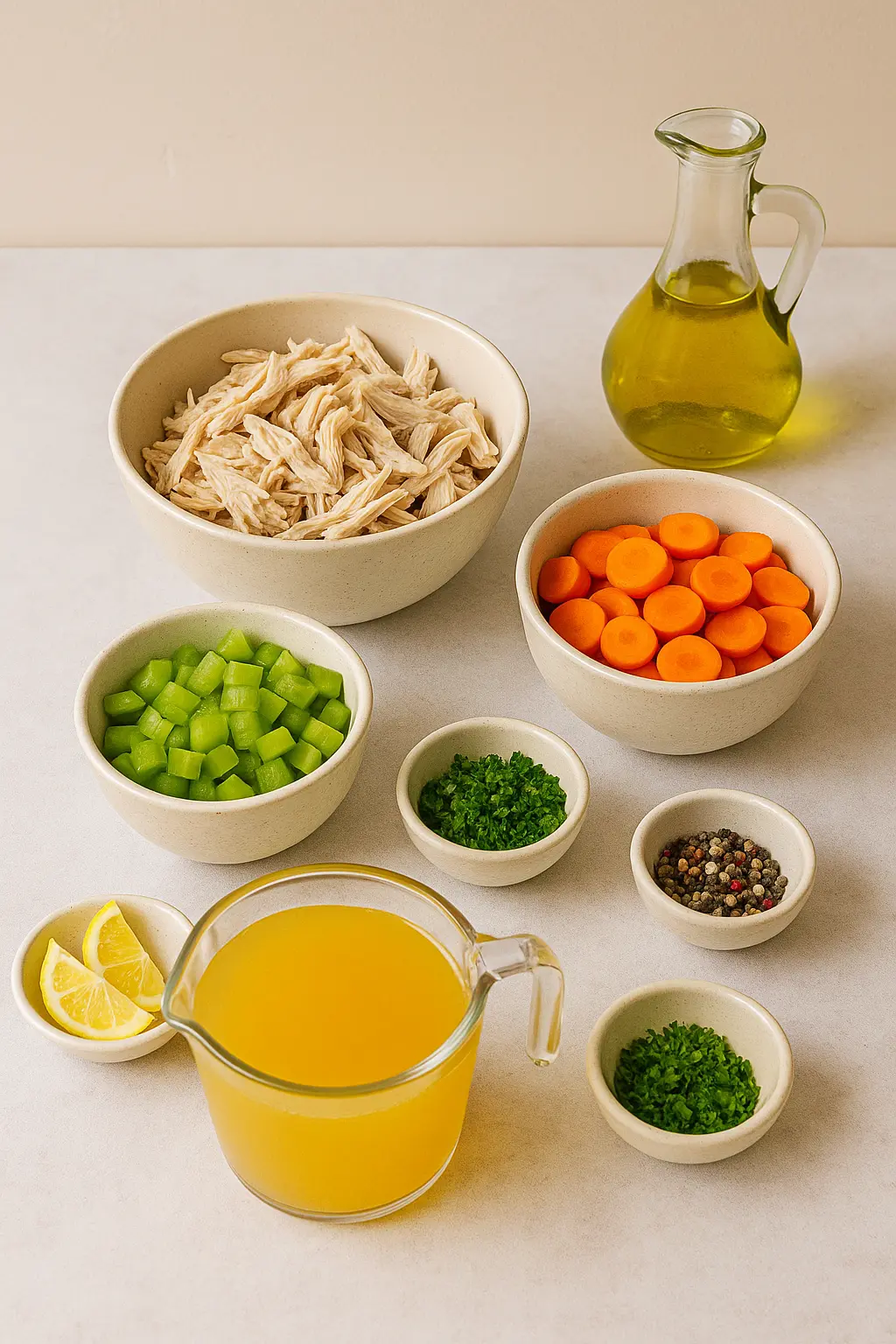
📝 Tips & Variations
- Make it creamy: Blend half the soup and return it to the pot for a thicker consistency.
- Spice it up: Add a dash of cayenne or chili flakes for a warming kick.
- Vegetarian version: Use chickpeas instead of chicken and vegetable broth.
- Make-ahead: This soup freezes beautifully. Store in portions for a quick, anti-inflammatory meal anytime.
🌿 The Science Behind the Ingredients
Chicken Bone Broth
A powerhouse for gut healing, bone broth contains gelatin, amino acids, and minerals that support digestion and reduce inflammation.
Turmeric + Black Pepper
This combo increases curcumin absorption by up to 2000%. Curcumin is the active compound in turmeric known for fighting oxidative stress and inflammation.
Ginger
Well-known for easing nausea and joint pain, ginger also helps calm the gut lining.
Garlic & Onions
Natural detoxifiers and immune boosters, they play a key role in reducing inflammatory markers.
🌞 Summer Version
To make this soup lighter for warmer weather:
- Use zucchini noodles instead of rice.
- Add a squeeze of lemon and serve chilled like a savory gazpacho.
- Include fresh herbs like basil or dill for brightness.
❄️ Winter Version
For a cozy winter meal:
- Add more root vegetables like parsnips or sweet potatoes.
- Use a touch of coconut milk for a creamy broth.
- Include warming spices like cinnamon and nutmeg for depth.
🥼 Backed by Science: What the Experts Say
Several clinical studies support the anti-inflammatory benefits of the ingredients found in chicken soup for inflammation:
- A study in the journal Chest found that chicken soup has mild anti-inflammatory effects and can help ease upper respiratory symptoms.
- Curcumin, the active compound in turmeric, has been shown to inhibit molecules that play a major role in inflammation, such as NF-kB and cytokines.
- Gingerols, found in ginger, reduce oxidative stress and modulate immune responses, beneficial for conditions like arthritis.
- Bone broth contains glutamine, which may improve gut lining integrity and reduce chronic inflammation.
Registered dietitians often recommend soups like this as part of an anti-inflammatory diet due to their hydrating nature, nutrient density, and gut-soothing ingredients.
🥗 Serving Suggestions
You can enjoy chicken soup for inflammation as:
- A starter for an anti-inflammatory meal, followed by a lean protein and leafy salad.
- A main course when served with a whole grain like quinoa or barley for added fiber.
- Post-workout recovery food, thanks to its hydration, electrolytes, and joint-soothing properties.
- A fasting day meal — light but deeply nourishing, perfect to support your body’s detox pathways.
Pair it with anti-inflammatory beverages like green tea, turmeric latte, or infused lemon-ginger water for an even greater benefit.
Read more : https://chefnip.com/anti-inflammatory-chicken-turmeric-soup/
💡 How to Make It Even More Anti-Inflammatory
To boost your chicken soup for inflammation, try these simple enhancements:
- Add a small piece of kombu (edible seaweed) during the simmer for a mineral boost.
- Use pasture-raised or organic chicken for cleaner protein and better omega-3 to omega-6 ratios.
- Include a few slices of fresh chili or cayenne for capsaicin, another potent inflammation fighter.
- Drop in a handful of fresh parsley at the end — it’s rich in vitamin C and has mild diuretic properties.
❓ Frequently Asked Questions
Is chicken soup good for chronic inflammation?
Yes. Chicken soup for inflammation includes multiple ingredients proven to support immune health and reduce systemic inflammation when consumed regularly.
Can I freeze this soup?
Absolutely. This soup stores well in freezer-safe containers for up to 3 months. Reheat gently to preserve nutrients.
Can I make it in a slow cooker or Instant Pot?
Yes! For a slow cooker, cook on low for 6–8 hours. For an Instant Pot, use the soup or pressure cook setting for about 30 minutes, followed by natural pressure release.
Can kids or elderly people eat this?
Definitely. It’s gentle on the stomach, rich in nutrients, and easy to digest. Just reduce or eliminate spicy elements for younger or more sensitive palates.
🍵 When to Eat Chicken Soup for Inflammation
This soup is ideal:
- During cold and flu season, for symptom relief and immune support.
- After intense exercise, to help soothe inflammation and joint stress.
- When managing autoimmune conditions, as part of a supportive dietary plan.
- Post-surgery or during recovery, when your body needs easy-to-digest nourishment.
Making chicken soup for inflammation a weekly staple can gently nudge your body toward a healthier inflammatory response.
🧾 Nutritional Breakdown (Per Serving – Approximate)
- Calories: 220
- Protein: 22g
- Fat: 7g (mostly from healthy sources)
- Carbohydrates: 15g
- Fiber: 4g
- Sodium: 480mg
- Sugar: 3g (naturally occurring)
This makes it a balanced, low-glycemic option that fits into many healing diets including paleo, gluten-free, and low-carb.
🧘♀️ Chicken Soup for Inflammation and Lifestyle Synergy
While no single meal is a cure-all, regularly including recipes like chicken soup for inflammation can create meaningful change when combined with:
- Stress management (e.g., mindfulness, yoga)
- Regular physical activity
- Adequate sleep and hydration
- Minimizing ultra-processed foods and sugar
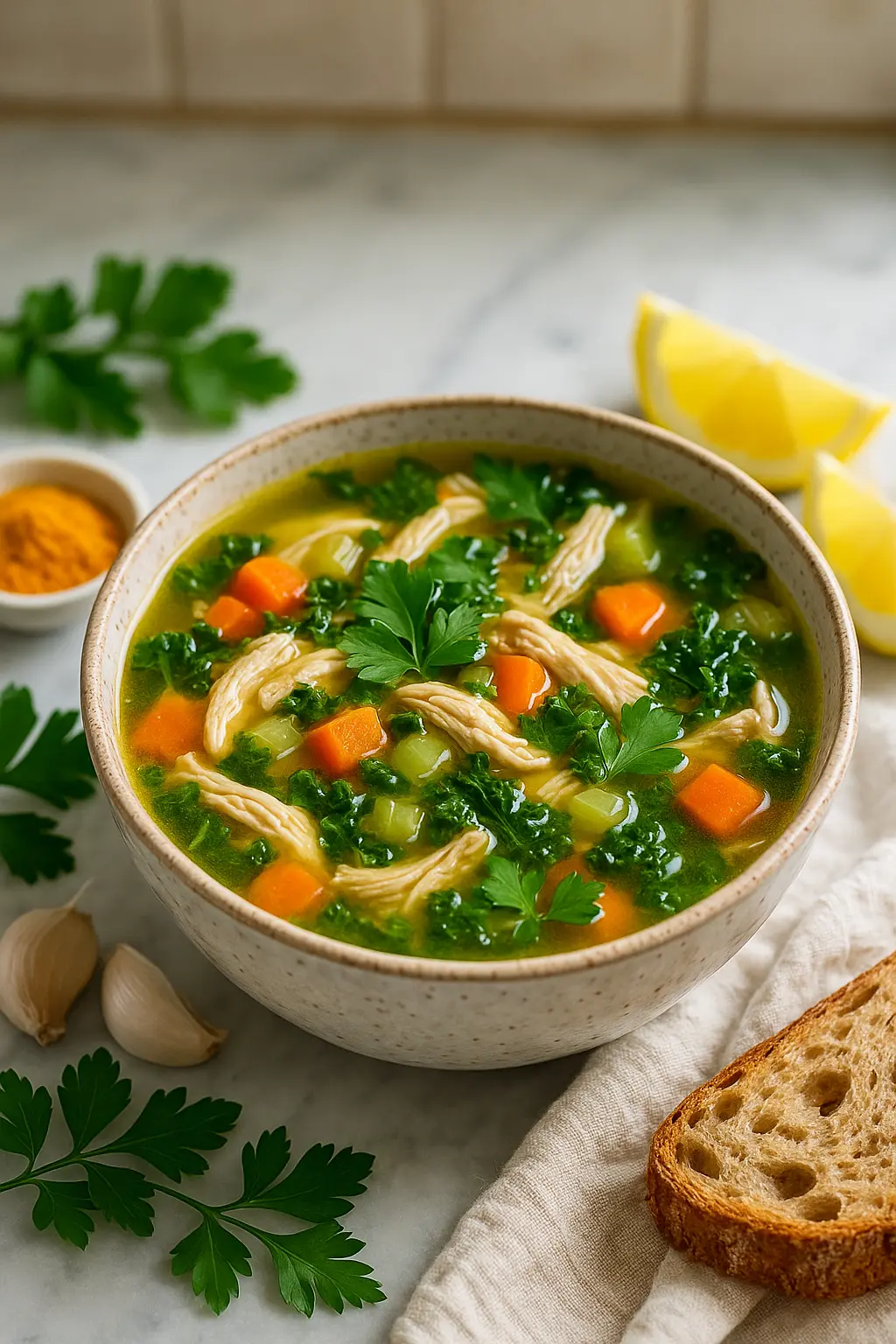
🧊 Storage Tips: Keep It Fresh and Healing
One of the beauties of chicken soup for inflammation is its versatility in meal prep:
Refrigerator
- Store in airtight glass containers for up to 5 days.
- Let the soup cool before sealing to avoid condensation.
Freezer
- Freeze in individual portions using silicone molds or freezer-safe containers.
- Label with the date — best used within 3 months.
- Thaw overnight in the fridge or defrost gently on the stove.
Reheating Tip
To preserve anti-inflammatory compounds (especially from garlic and turmeric), reheat over low heat without boiling.
🥄 Make It Your Own: Ingredient Substitutions
Life happens, and sometimes you don’t have everything on hand. Here’s how to modify chicken soup for inflammation without sacrificing its benefits:
| Ingredient | Substitution |
|---|---|
| Chicken thighs | Chicken breast or turkey |
| Bone broth | Vegetable broth + collagen powder |
| Kale or spinach | Swiss chard or bok choy |
| Cauliflower | Broccoli or cabbage |
| Turmeric | Curry powder (with turmeric base) |
| Ginger | Galangal or a splash of ginger tea |
This flexibility makes it easy to keep the recipe exciting and tailored to your dietary preferences.
🍽️ One Recipe, Many Uses: Weekly Healing Plan
Here’s how you can incorporate chicken soup for inflammation throughout your week:
Monday
Lunch: Soup as-is with fresh lemon and parsley.
Evening: Blend a portion into a creamy base and serve with roasted chicken.
Tuesday
Lunch: Add quinoa and avocado for a protein-rich bowl.
Evening: Serve chilled (summer version) with cucumber slices and a drizzle of olive oil.
Wednesday
Lunch: Pair with a mixed greens salad and flaxseed crackers.
Evening: Add a spoon of coconut milk and lime for a Thai twist.
Thursday
Lunch: Use soup as a base for a grain bowl with roasted veggies.
Evening: Light dinner before fasting — soothing and hydrating.
Friday
Lunch: Toss in beans for extra fiber.
Evening: Spice it up with chili and serve with sourdough.
This shows how one foundational recipe can evolve through the week, keeping your meals interesting, nourishing, and inflammation-aware.
💬 More Frequently Asked Questions
1. Does chicken soup have anti‑inflammatory properties?
Yes — laboratory research from 2000 showed chicken soup inhibited neutrophil migration, indicating a mild anti‑inflammatory effect that may help alleviate symptoms of colds and upper respiratory infections.
2. How does chicken soup reduce inflammation?
Studies suggest it’s a combined effect: chicken and vegetables release water‑soluble bioactive compounds that interfere with inflammation, and the steaming hot broth helps relax airways, temporarily slowing inflammatory cell activity .
3. Which ingredients in chicken soup help with inflammation?
Key anti‑inflammatory contributors include:
- Chicken (source of cysteine and tryptophan)
- Vegetables like carrots, celery, garlic, onion
- Bone broth additives like gelatin, glucosamine, chondroitin
These ingredients provide vitamins, antioxidants, electrolytes, and joint‑support compounds.
4. Is homemade chicken soup better than store‑bought for inflammation?
Generally, yes. Homemade versions allow control over sodium levels and ingredient quality, leading to richer nutrient profiles and better therapeutic potential.
5. Can chicken soup cure a cold or is it just a comforting food?
It’s not a cure—but it alleviates symptoms and supports recovery. Medical experts agree it offers hydration, nutrition, and mild anti‑inflammatory action, often making sufferers feel better even without eradicating the virus itself.
6. How hot should chicken soup be to ease inflammation?
Serving soup hot (warm enough to emit steam) helps open airways, improve mucus flow, and provides mild thermal anti‑inflammatory effects in the nasal passages
🧘♂️ A Final Note on Mindful Healing
Food is powerful — especially when it’s prepared with care. Making chicken soup for inflammation from scratch allows you to connect with your body’s needs and offer it warmth, nourishment, and healing in its most primal form.
Consider it a small but mighty act of self-care — a reminder that healing doesn’t always come in a pill or prescription, but often from a simmering pot in your own kitchen.


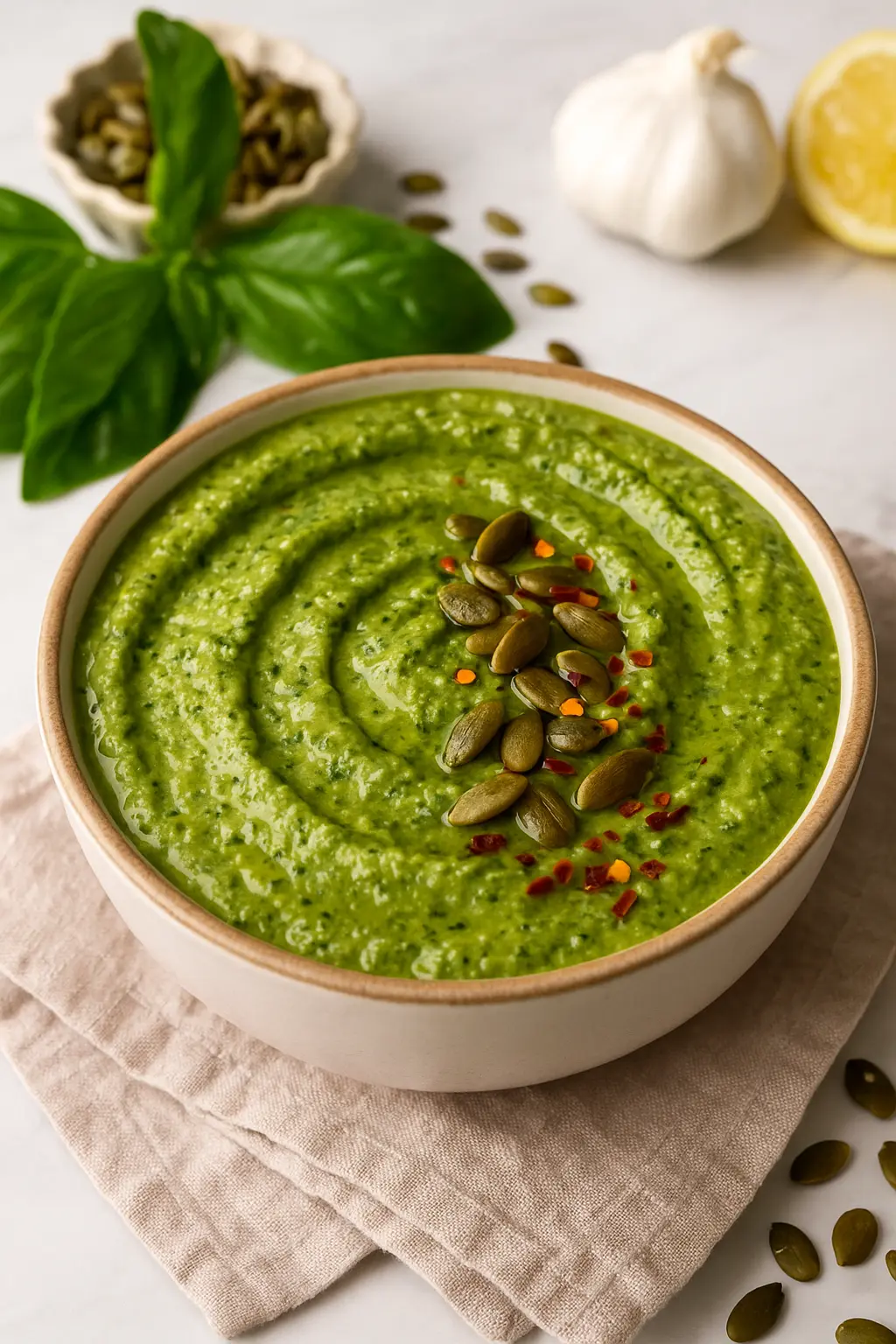
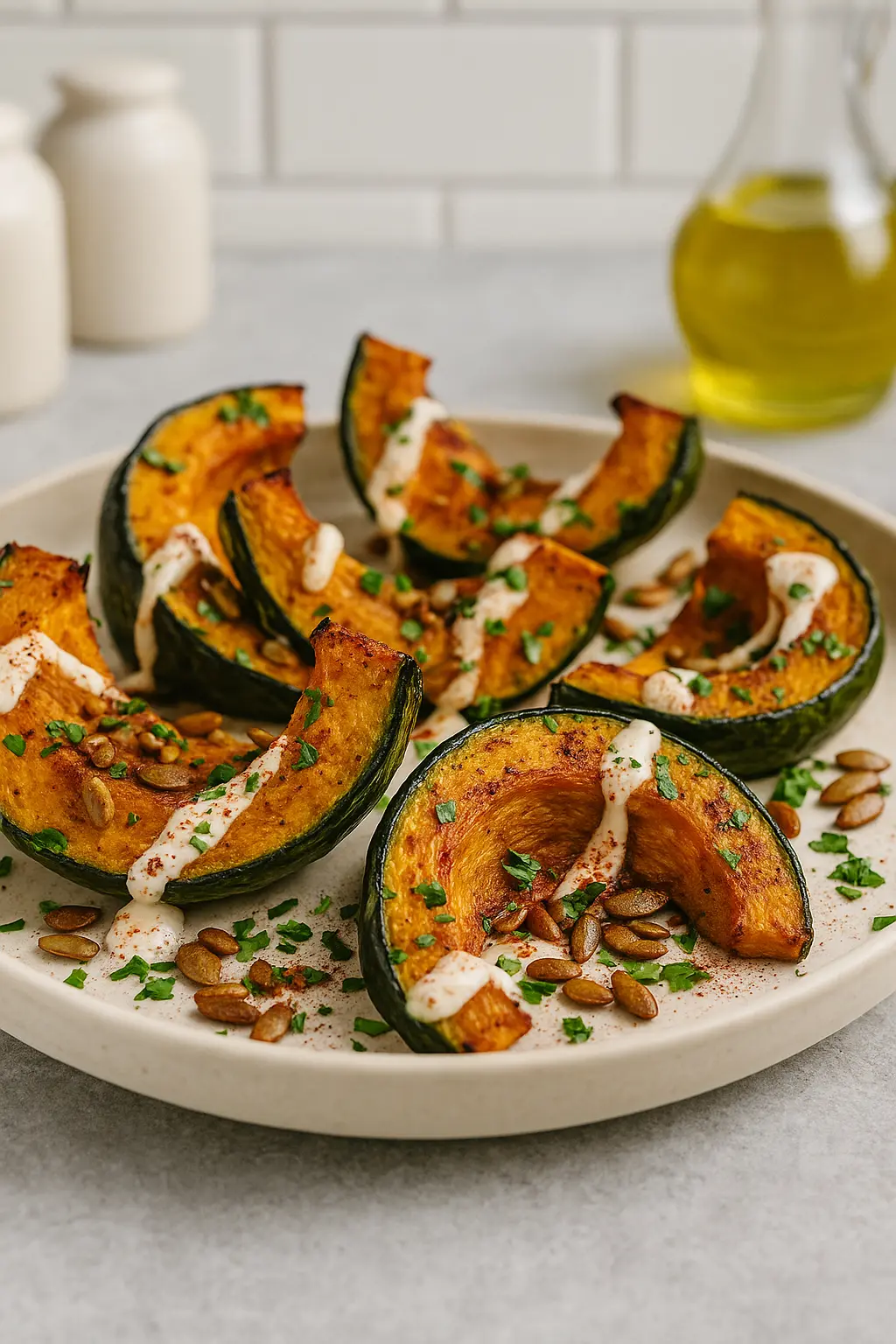


Comments and Reviews